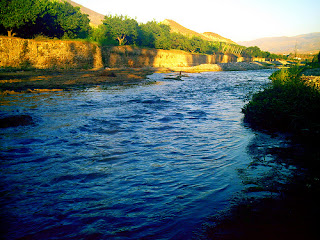HYDRAULIC ENGINEERING:
Hydraulic
engineering is the application of fluid mechanics principles to problems
dealing with the collection, storage, control, transport, regulation,
measurement, and use of water. Before beginning a hydraulic
engineering project, one must figure out how much water is involved.
The hydraulic engineer is concerned with the transport of sediment by
the river, the interaction of the water with its alluvial boundary, and the
occurrence of scour and deposition. "The hydraulic engineer actually
develops conceptual designs for the various features which interact with water
such as spillways and outlet works for dams, culverts for highways, canals and
related structures for irrigation projects, and cooling-water facilities for
thermal power plants.”
HYDRAULIC
STRUCTURES
The general mechanic is based in fluid of mechanic
and big topics that covering water, canals and bridges. The fluid mechanic is
based in three fundaments aspect:
Static: in the static is
possible fundament aspect.
Kinematics: in the
kinematics of the flow lines and trajectoriesDynamics: In the dynamics studies the forces which price water movement.
GENERAL
HYDRAULICS
The hydraulics structures
are necessary to achieve the use of resources water and control it is
destructive action. Also they are built for the benefit of man and the
development of making.
At is creating to benefits sectors which are:
Hydropower
Water
transport
Improving
water
Water
supply for human consumption Flood control
Application
Common topics of design for hydraulic engineers
include hydraulic structures such as dams, levees, water distribution
networks, water collection networks, sewage collection networks, storm
water management, sediment transport, and various other topics related
to transportation engineering and geotechnical engineering.
Equations developed from the principles of fluid
dynamics and fluid mechanics are widely utilized by other
engineering disciplines such as mechanical, aeronautical and even
traffic engineers.
Related
branches include hydrology and rheology while related
applications include hydraulic modeling, flood mapping, catchment flood
management plans, shoreline management plans, estuarine strategies, coastal
protection, and flood alleviation.
HYDRAULIC ENGINEERING IN THE CENTER OF PETEN
(GUATEMALA):
The great advances that left the Mayan tribes in
terms of hydraulic engineering have a very broad field, they helped build
irrigation systems for agriculture, canals and large walls that helped protect
the great wars, and these breakthroughs are today helping thousands of people
in Guatemala, to help communication, transportation and consumption of drinking
water.
TEACHING OF HYDRAULIC ENGINEERING IN CUBA
(1900-1942)
Article in which we study the evolution of the
teaching of hydraulic engineering in Cuba between 1900 and 1942 in three stages
of this period, through the analysis of the subjects incorporated in the
curriculum of the engineering electrical, agricultural engineering, but mainly
in civil engineering.
This
video is about the different work as construction of hydraulic engineering in
case easy as:
Pipes, sewers, etc.





No hay comentarios:
Publicar un comentario